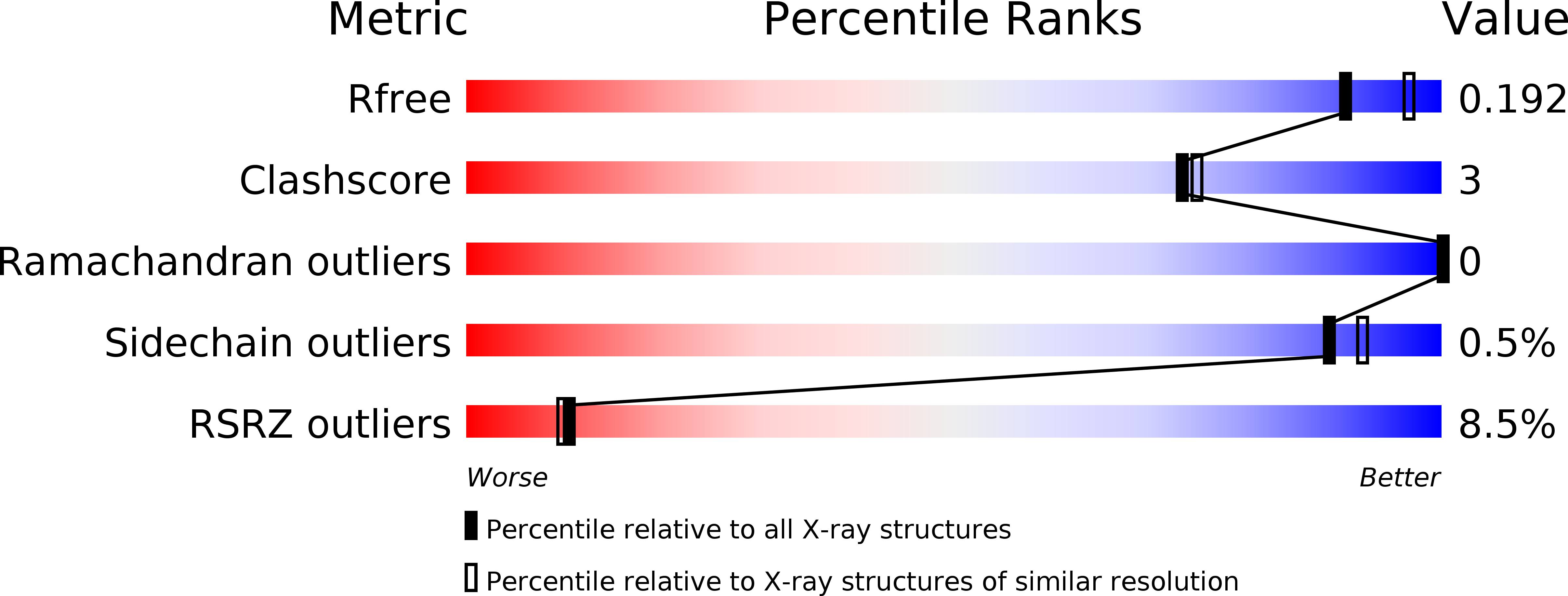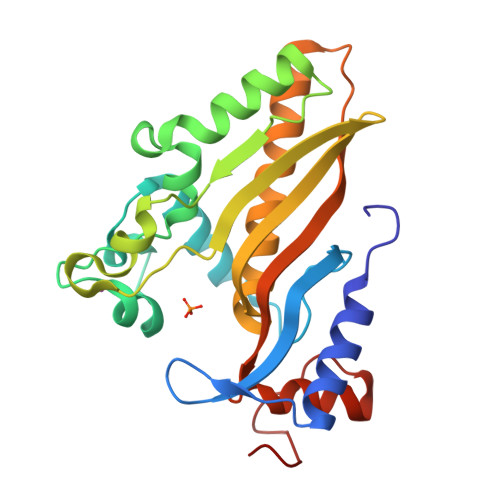A cytosine modification mechanism revealed by the structure of a ternary complex of deoxycytidylate hydroxymethylase from bacteriophage T4 with its cofactor and substrate.
Park, S.H., Suh, S.W., Song, H.K.(2019) IUCrJ 6: 206-217
- PubMed: 30867918
- DOI: https://doi.org/10.1107/S2052252518018274
- Primary Citation of Related Structures:
6A9A, 6A9B - PubMed Abstract:
To protect viral DNA against the host bacterial restriction system, bacterio-phages utilize a special modification system - hydroxymethylation - in which dCMP hydroxymethylase (dCH) converts dCMP to 5-hydroxymethyl-dCMP (5hm-dCMP) using N 5, N 10-methylenetetrahydrofolate as a cofactor. Despite shared similarity with thymidylate synthase (TS), dCH catalyzes hydroxylation through an exocyclic methylene intermediate during the last step, which is different from the hydride transfer that occurs with TS. In contrast to the extensively studied TS, the hydroxymethylation mechanism of a cytosine base is not well understood due to the lack of a ternary complex structure of dCH in the presence of both its substrate and cofactor. This paper reports the crystal structure of the ternary complex of dCH from bacteriophage T4 (T4dCH) with dCMP and tetrahydrofolate at 1.9 Å resolution. The authors found key residues of T4dCH for accommodating the cofactor without a C-terminal tail, an optimized network of ordered water molecules and a hydrophobic gating mechanism for cofactor regulation. In combination with biochemical data on structure-based mutants, key residues within T4dCH and a substrate water molecule for hydroxymethylation were identified. Based on these results, a complete enzyme mechanism of dCH and signature residues that can identify dCH enzymes within the TS family have been proposed. These findings provide a fundamental basis for understanding the pyrimidine modification system.
Organizational Affiliation:
Department of Life Sciences, Korea University, 145 Anam-ro, Seongbuk-gu, Seoul 02841, Republic of Korea.


















